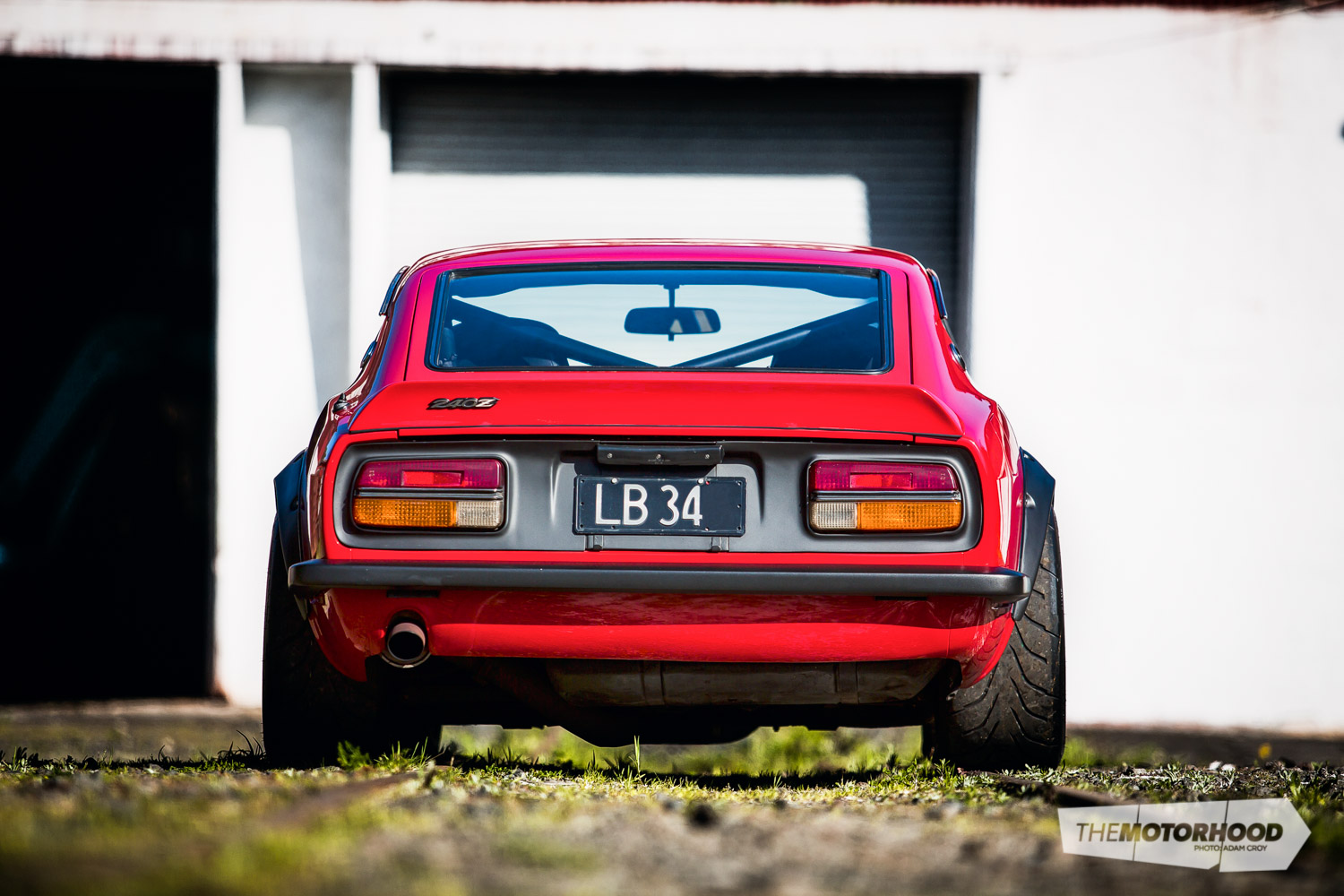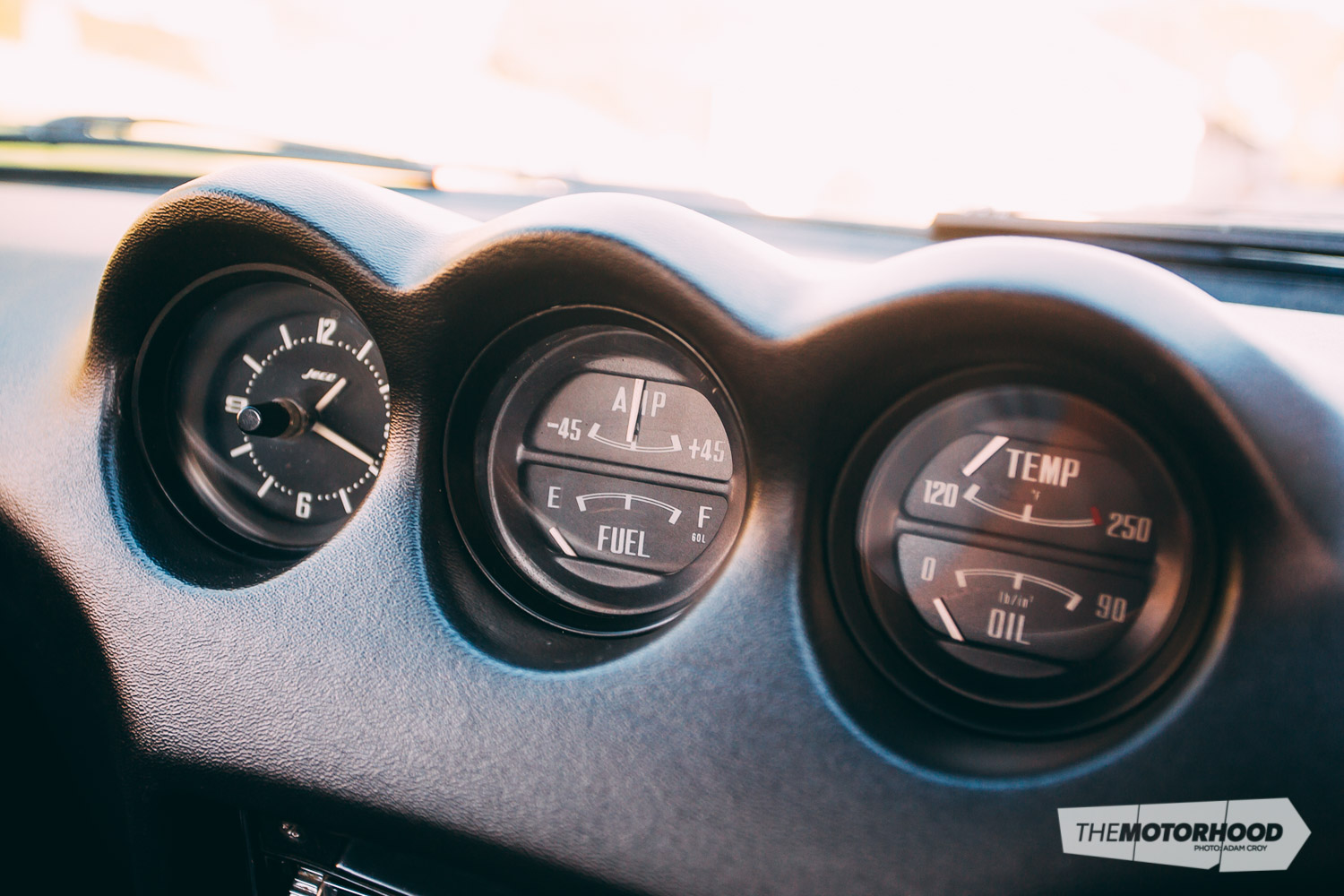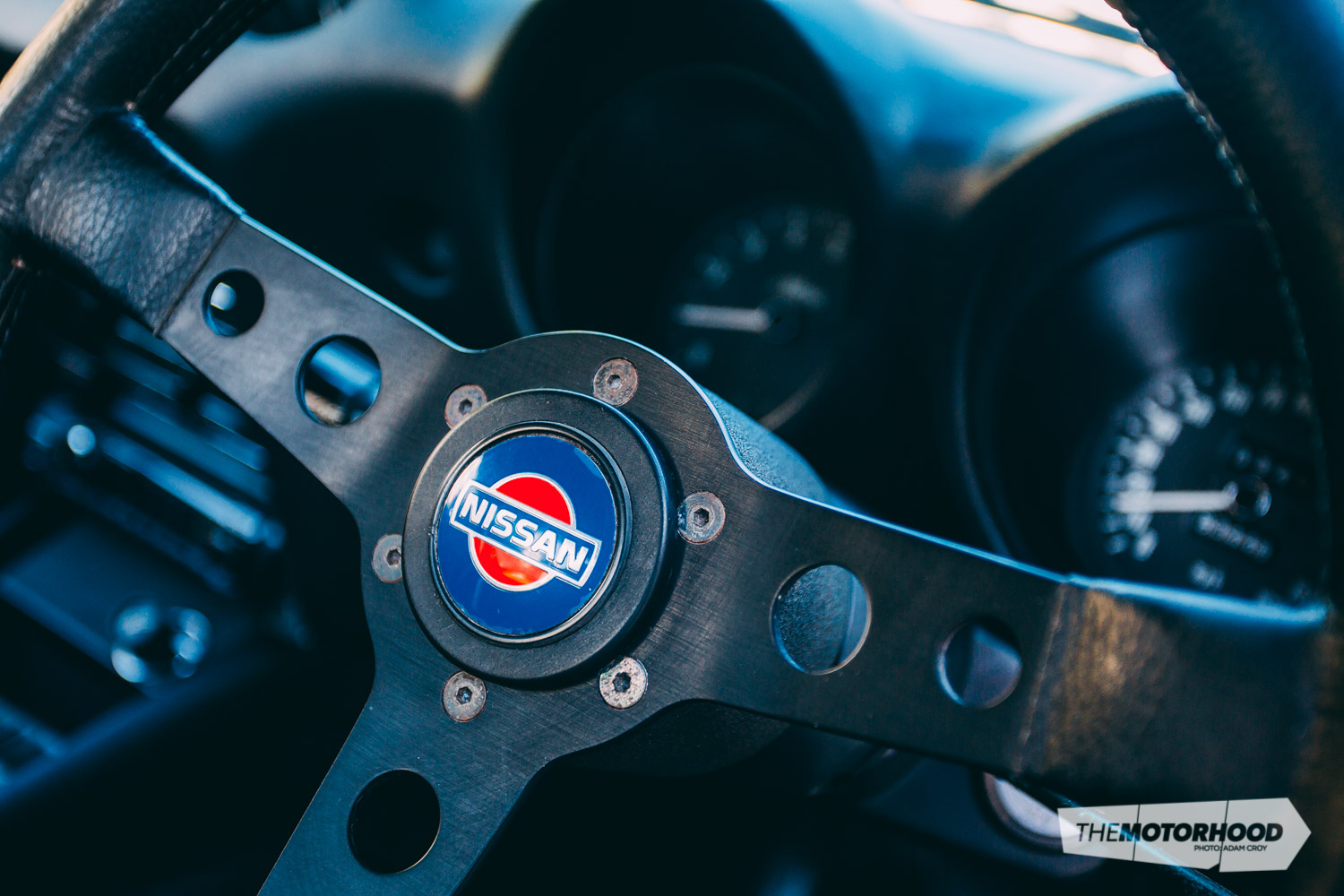Want that classic Zed style with late-model Zed performance and reliability? Mikey McLellan might just have the answer
The original Nissan ‘Z’ car was a game-changer — an almighty karate kick to the nuts of every other manufacturer in the world, which said, ‘Hey, just so you know, Japan can build kick-arse sports cars too, and we can do it for half the price’. Along with the Datsun 510 (1600), the Datsun 240Z was unleashed on the world in 1969, and served as a serious wake-up call to Western manufacturers when it debuted to rave reviews across the board. It handled better, drove better, was faster, and was far more reliable than American, British, and European sports cars commanding twice the price. With its dependable, almost indestructible, 2.4-litre straight-six, solid driveline, and lightweight body, the Zed was the new benchmark and an instant legend. But all that was 40 years ago, and things have changed …
Four decades of technological advancement have left the 240Z astronomically obsolete, so what should you do if you love everything about the classic Zed but want all the power and reliability that decades’ worth of Zed evolution offers? Mikey McLellan has the answer.
After spending eight years overseas on what he calls an “extended OE”, he decided it was finally time to come back home and buy a house with a proper garage so he could get stuck into a real project — something he had always wanted to do but had never stayed in one place long enough to manage. “I started reading up on websites and magazines, and found a 240Z featured on Speedhunters.com that was enough for me to start looking for an S30 on Trade Me,” he says. After checking out a raft of other Zeds that were more rust than car (the bane of every S30 owner’s life), Mikey eventually found his 1972 Datsun 240Z in Tauranga, made the deal, and drove the pretty much stock car, complete with the original 2400cc L24 straight-six and factory twin SU carburettors, back to Auckland.

Though Mikey has always had plans for an engine swap (at the time, an RB26 was the most likely choice), he smartly decided to work on the basics first. Handling was at the top of the list, but fitting a good set of coilovers into these cars certainly isn’t the easiest thing to do, especially if you want your Zed to go low. Mikey did things properly, though, ordering a weld-in adjustable coilover kit and camber plates from Ground Control in the States. First, the factory strut tubes needed a 40mm section removed to allow the car to sit low, then the original spring perch was removed and a new one was welded in place, lower down the tube. New Koni shocks, exactly the right length for the shortened tubes, were then fitted before Mikey took to the strut tower with a grinder so the trick camber plates could be fitted. The new set-up not only allows the Zed to sit at just the right ride height but also provides some excellent handling characteristics both on and off the track, especially when combined with big 25mm sway bars front and rear.
The suspension itself is of course only one factor that contributes to road-holding ability — how much rubber meets the road is important too. Though stock 240Z guards do allow for some decent-width wheels and tyres, there’s no harm in going much wider again, and this is made easy thanks to Nissan’s introduction of the special Fairlady ZG model back in the 1970s, which used big bolt-on over-fenders (along with the ducktail spoiler and longer nose). These simple guard extensions have been used for decades by aftermarket tuners and are fairly easy to get hold of, so Mikey ordered a set from Japan and began chopping high up into the factory guards to allow for some big rubber once the flares were attached.
Anyone who knows vintage Japanese cars knows that 240Zs and RS Watanabe wheels go together like Brian Spilner and nitrous oxide, so this combo was an obvious choice for Mikey at the time, and he managed to find just the right set of 16×8.5- and 16×9.5-inch R-Types in Japan. “I love the Wats,” Mikey says. “Back when I bought them, I thought they were the only wheels for an S30, but, now I’ve learned a bit more about Japanese car culture, there are plenty of other more interesting wheels I could have. Maybe if I ever pay off my credit card, I’ll splash out on some SSR Formula Mesh wheels.” For now though, the Watanabes sit absolutely perfectly under the new fibreglass flares, pushing the track of the car out considerably and allowing for some wide semi-slick rubber.

It was at this point, after taking the stock L24-powered Zed to a couple of track days, that Mikey started to rethink his RB26 repower idea. There were a few options on the table, but, in the end — though it might not have been the most obvious choice — he decided to go from straight-six to V6, sticking directly within the Zed bloodline by using a 3500cc V6 VQ35DE from a 350Z, four generations newer than the original 240Z — six if you count the S30 260Zs and 280Zs. Mikey explains his decision: “The RB was ruled out, because, to get big performance out of it, you have to go turbo, and I didn’t really want to start with a turbo, because I thought natural aspiration would be more forgiving of my mediocre driving skills, and I couldn’t be bothered with all the plumbing. I could probably get around the same power [as a stock VQ35DE] out of an NA [naturally aspirated] RB26 with some work, but it’s a lot heavier than a VQ, which is all alloy. The VQ is [also] shorter, so gives better weight distribution, it almost entirely fits behind the strut towers, and gives 300hp [224kW] completely stock. Also, by using the VQ35 from a 350Z, I get a stout six-speed manual transmission.”
Mikey found himself a motor and box out of the States and began ripping everything out of the engine bay while he waited for it to arrive. With an empty hole under the bonnet, there would never be a better time to tidy things up, so he also got to work sanding back the bay, simplifying things a little, and then respraying it himself in the original red. When the motor arrived, it was lowered into the bay for a quick eyeball — it was going to be a tough job. “The hardest part of the whole build was probably the mounting of the engine. It’s pretty tight, and I had to make a new cross member, which took a lot of measuring and trial and error to get right,” Mikey recalls. There were other big jobs to think about, too. The new gearbox was a whole lot bigger than the old one and required a fair amount of work to fit, plus, going from carb to fuel injection meant a lot of rewiring and an all-new fuelling set-up. There were certainly some issues trying to mate old technology with modern, but Mikey is happy with how it all went down. “It was all a good learning experience for me,” he says. “I had to teach myself a lot of stuff I’d never done before, like CAD and learning all about ECU wiring, which was satisfying. I also got to buy lots of new tools!” Soon enough, with plenty of perseverance, a Nismo R180 limited-slip diff, custom driveshaft, and a simple exhaust system by TTT in Auckland (which also fabricated the half cage), the newly repowered Zed was fired up for the first time, and it was glorious.

Surprisingly, the late-model V6 doesn’t sound all that different from an old-school modified Nissan L-motor, and it certainly has that same raspy, raw howl, which suits these classic coupés perfectly. Aside from the noise, and, of course, the reliability, the VQ has also made this car damn fast. The Zed’s power has essentially doubled, as it’s gone from 112 to 224kW (150 to 300hp), and it’s lost a little weight, coming in now at somewhere around the one tonne mark. When you consider that the 350Z, with its 1500–1600kg kerb weight, is no slowpoke, you begin to gain an understanding of just how fun this car must be to drive.
Most people would be happy at this point, but Mikey needed his car to be a lot closer to perfect, so got a crew of friends together to help him strip the exterior back to bare metal over the course of a few days, before taking it over to see the guys at GT Refinishers. Grant and the team had a big task ahead of them, as, although the car looked OK with its original red paint on, underneath was another story, and a long list of issues reared its ugly head. Poor past repairs and hidden rust were all cut out and replaced with panel steel before new coats of primer and fresh bright red were laid down on top. Mikey decided on a contrasting satin black for the exterior details, and, once the car was sitting back down on its freshly painted Watanabes, it looked undeniably amazing.

With big R32 GT-R brakes up front, the original seats freshly upholstered, the dash recovered, and the factory gauges all working with the new engine — a much harder task to achieve than it sounds — Mikey is finally pretty happy with his 240Z. “It’s a lot more fun,” he says. “I drive the car to work most days. It’s a handful, especially in the wet. Track days are always fun, giving people a surprise and passing flash new cars; the handling is a lot sharper than the stock suspension; and it sounds pretty angry at [high] revs.”
Mikey has taken some of the best aspects from Nissan’s Zed-car lineage to create an absolutely stunning bit of classic Japanese tin that goes as good — actually, we should say, much better — than a modern Zed, and handles like one, too. He has managed to update one of the most iconic cars of the ’70s without ruining it in the slightest or taking away any of that vintage rawness we all love so much about cars like this. Look out for the bright-red beauty at your next track day this coming summer, and, remember, just because it looks like an old car, doesn’t mean it goes like one!
View fullsize

View fullsize

View fullsize

View fullsize

View fullsize

View fullsize





